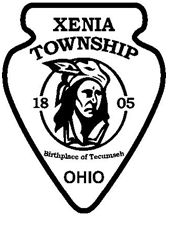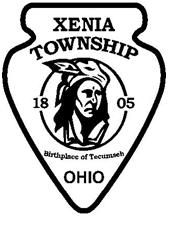Call Us
(937) 372-0859
Fax
(937)372-3343

OFFICE HOURS
MON–FRI: 9:00 AM - 4:00 PM
XENIA TOWNSHIP FIRE
Carbon Monoxide
|
Smoke Detector Tips:
a. At least one every level of house
1) Mounted on ceiling near center of room
2) Mounted on wall, 6 to 12 inches from ceiling
b. In or near every sleeping area
1) Optimal is one in every sleeping area
2) At least one outside each sleeping area
c. One detector on every floor outside each sleeping area and inside each bedroom ideally
Maintenance
a. Vacuum or dust weekly
b. Test power supply monthly by pressing test button
c. Change battery when changing clock for daylight saving time
d. Replace
1) At least once every 10 years
2) If detector beeps intermittently after cleaning and battery replacement
Fire Inspections For Home and Business
Home Fire Safety Survey
A. Introduction
Most fires involving a loss of life occur in the home
Home fire safety surveys are not code compliance inspections
B. Firefighter responsibilities
We will provide proper identification
Our primary interest is to prevent a fire
We will compliment when favorable conditions are found
We do not order that corrections must be made when hazards are found
We will make constructive comments regarding the elimination of hazardous conditions
We will survey the basement, attic, utility room, storage rooms, kitchen, and garage and keep the survey confidential
We will be alert for signs of the most common causes of fires
a. Heating appliances
b. Cooking procedures
c. Smoking materials
d. Electrical distribution
e. Electrical appliances
f. Combustible or flammable liquids
Interior survey concerns
a. Combustible materials
1) Stored properly
2) Proximity to registers or heating appliances
b. Appliances
1) Proper operation
2) Maintenance
3) Condition
c. Electrical wiring and equipment
1) Old, frayed, or exposed wiring
2) Improperly installed electrical conductors
3) Unprotected light bulbs
4) Improperly maintained equipment
d. Portable heating units
1) Listed with testing laboratory
2) Adequately spaced from combustible furniture
e. Woodstoves or fireplaces
1) Properly installed
2) Clear of combustibles
3) Vent pipe in good condition
4) Chimney cleaned and maintained
f. Heating fuel
1) Where stored
2) Proper ash disposal procedure
g. General housekeeping practices
1) Ash trays for smoking materials
2) Matches and lighters out of reach of children
3) Open flame used safely
4) Exhaust vents and dryer vents cleaned regularly
h. Smoke detectors
1) Installed
2) Tested on regular basis for responsive to smoke and battery operation
i. Electrical distribution panels
1) Circuit protection
2) Clearance
j. Gas appliances
1) Improper clearance to combustible materials
2) Automatic gas control safety devices
3) Condition of vents
4) Possible gas leaks
k. Oil burning installations
1) Annual service records
2) Condition of oil burners, chimney pipes, supply tanks, and piping
l. Furnaces, hot water heaters, and vent pipes
1) Properly installed
2) Clear of combustibles
3) Vent pipe in good condition
4) Hot water temperature set to prevent injury
m. Shop or work rooms
1) Good housekeeping
2) Safe and orderly storage of materials
n. Accumulated waste - no stacks of paper, discarded furniture, old rags, or improperly stored items
o. Flammable liquids
1) Flammable sprays, chemicals, and other dangerous solutions properly stored
2) Out of reach of children
Open Burning
Any time you light an outdoor fire it is considered open burning. Some materials may not be burned anywhere in the state at any time.
These are:
-
materials containing rubber, grease, and asphalt or made from rubber, grease, and asphalt or made from petroleum, such as tires, cars and auto parts, plastics, or plastic-coated wire;
-
garbage--any wastes created in the process of handling, preparing, cooking, or consumption of food; and<
-
dead animals.
Open burning is not permitted in a restricted area. Restricted areas include:
-
within the boundaries of any municipal corporation
-
within corporation limits and a 1,000-foot zone outside any municipal corporation having a population of 1,000 to 10,000; and
-
within corporation limits and a one-mile zone outside any municipal corporation with a population of more than 10,000.
A few types of open burning are permitted everywhere, even in restricted areas. Fires must be kept to a minimum size for their intended purpose and shall not be used for waste disposal purposes.
Within a Restricted Area
Permitted burning includes:
-
cooking for human consumption (barbecues, campfires, cookouts);
-
heating tar;
-
welding and acetylene torches;
-
smudge pots and similar occupational needs; and
-
heating for warmth or outdoor workers and strikers. Use common sense: use only clean wood and restrict the size of the fire so it can be contained in a 55-gallon drum.
Outside a Restricted Area
Outside a restricted area, the following types of wastes generated on the premises can be burned:
-
Agricultural wastes: material generated by crop, horticultural, or livestock production practices. This includes fence posts and scrap lumber but not buildings.
-
Landscape wastes: plant matter such as tree trimmings, branches, stumps, brush, weeds, leaves, grass, shrubbery, yard trimmings, and crop residues.
-
Land-clearing wastes: plant matter which is removed when land is cleared for residential, commercial, or industrial development. This material may be burned only under certain circumstances and with prior written permission from Ohio EPA.
-
Residential waste: wastes such as wood or paper products that are generated by one-, two-, or three-family residences. Garbage may not be open burned.
However, no open burning can take place within 1,000 feet of an inhabited building located off the property where the fire is set. Nor can the fire obscure visibility for roadways, railroad tracks, or air fields.
Open burning is prohibited when air pollution warnings, alerts or emergencies are in effect.

© 2020 / All Rights Reserved